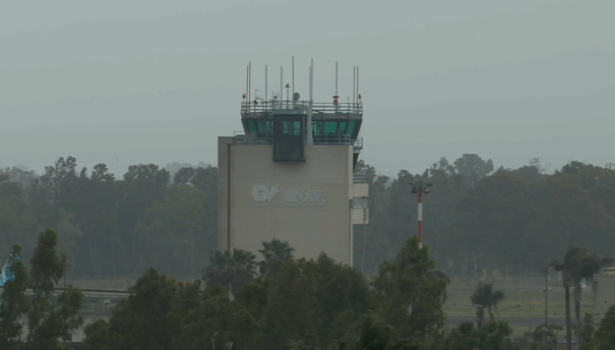The largest airport on the Italian island of Sicily — Catania Fontanarossa Airport (CTA) — re-opened on May 22 following the eruption of Mount Etna.

Mount Etna's Latest Eruption
In the early morning hours of Sunday, May 21, the tallest volcano in Europe, Mount Etna, began to erupt. The eruption, which was the most active in 30 years, spewed hundreds of tons of volcanic ash into the atmosphere above Sicily. This prompted ENAC, the Italian aviation authority, to decide to close most of the airspace above Sicily due to the threat that volcanic ash poses to aviation.

The area of closed airspace due to ash in the atmosphere included Sicily's largest airport of Catania Fontanarossa Airport (CTA). The city and airport are located extremely close to Mount Etna, just 35 kilometers (21 miles) from the mountain's volcanic basin.
It is due to this that shortly after the eruption, a thick layer of volcanic ash began to settle around the city of Catania and the surrounding area of the volcano. At this point, airport operations had already been suspended due to the anticipation of the settling of ash onto airport premises, and ash in the airspace surrounding Fontanarossa airport.
Threats of Volcanic Ash
Volcanic ash poses an extreme threat to aircraft due to the finite and abrasive nature of the particles that comprise it. If an aircraft is flying through volcanic ash, the particles will typically rub against the fuselage, causing damage.

The abrasive nature of the particles can also damage an aircraft's windscreen (cockpit windows), and engine components such as the fan blades. This can severely hamper an aircraft's aerodynamics and ability to fly.
For example, if volcanic ash accumulates enough in an aircraft's engines, the sticky particles can clog the air intake, preventing the blades from spinning.

Despite the closure of Catania's main airport, Falcone-Borsellino Airport (PMO) in the nearby city of Palermo remained open, with the airport's flights operating mostly on time.
The volcanic ash being ejected from Mount Etna was being blown from the volcano — which is on the Eastern coast of Sicily — out into the Mediterranean Sea. Since Catania is South-East of Mount Etna, it experienced a thick layer of volcanic ash, while Palermo did not experience any due to it being on the opposite side of the wind flow.
Catania Airport (CTA) Re-Opened to Air Traffic at 9 AM.
On the morning of May 22, the Italian aviation authority (ENAC) re-opened Sicilian airspace. At 7:00 a.m., an official announcement was made by Fontanarossa Airport through their social media accounts stating "...From 9 am the airport will be operational again and flight operations will be restored, with initial limitations...delays may occur..."
Photos shared to social media from Fontanarossa airport showed aircraft that had been stranded on the ground during the volcanic eruption. As for Fontanarossa airport's runway, it is most likely that the ash was cleared off via a combination of natural forces and runway plowing machines similar to those that clear snow in more northerly countries.

Following the eruption of Mount Etna and the re-opening of Fontanarossa Airport, no airlines that fly to Catania have made any public statements regarding their aircraft or operations at Catania. As of Thursday, May 25, 2022, it is not known whether or not airlines provided their passengers any additional accommodations and/or re-bookings due to the disruptions.
U.S. Government Admits Liability in Fatal Mid-Air Collision » Qanot Sharq Takes Delivery of First Airbus A321XLR to Transform Central Asian Long Haul Travel » NTSB: Maintenance Error Led to Citation CJ4 Gear Collapse in Baton Rouge »
Comments (0)
Add Your Comment
SHARE
TAGS
NEWS Catania Italy Italian Aviation Airport Volcano Natural DisastersRECENTLY PUBLISHED
 End of an Era: JetBlue's Farewell to the Embraer E190
On September 9, 2025, after nearly two decades of service, JetBlue Airways brought an end to an era with the retirement of its Embraer E190 fleet.
INFORMATIONAL
READ MORE »
End of an Era: JetBlue's Farewell to the Embraer E190
On September 9, 2025, after nearly two decades of service, JetBlue Airways brought an end to an era with the retirement of its Embraer E190 fleet.
INFORMATIONAL
READ MORE »
 Cities in the Sky: The Future Built on eVTOL Flight
Imagine stepping out of your office, walking to a nearby rooftop, and moments later lifting off vertically into the sky — no airport lines, no traffic, just a silent hop across the city. This future is no longer science fiction; it's the foundation of what could be aviation's biggest innovation since the jet age.
INFORMATIONAL
READ MORE »
Cities in the Sky: The Future Built on eVTOL Flight
Imagine stepping out of your office, walking to a nearby rooftop, and moments later lifting off vertically into the sky — no airport lines, no traffic, just a silent hop across the city. This future is no longer science fiction; it's the foundation of what could be aviation's biggest innovation since the jet age.
INFORMATIONAL
READ MORE »
 The Runway is Obsolete: Jekta Swiss is Resurrecting the Flying Boat for the 21st Century
AeroXplorer sat down with George Alafinov, CEO & Co-founder of Jekta Swiss. In conversation, he discussed the company's unique value proposition and how he sees his aircraft revolutionizing the amphibious aircraft industry.
STORIES
READ MORE »
The Runway is Obsolete: Jekta Swiss is Resurrecting the Flying Boat for the 21st Century
AeroXplorer sat down with George Alafinov, CEO & Co-founder of Jekta Swiss. In conversation, he discussed the company's unique value proposition and how he sees his aircraft revolutionizing the amphibious aircraft industry.
STORIES
READ MORE »



